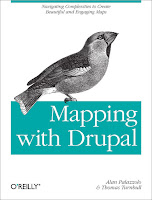21 May 2012, HONIARA. Pacific Islanders will now have a greater voice in climate change decision making and a more direct input in adapting their communities to climate change using a combination of traditional knowledge and technology. This will be made possible through the week-long awareness raising and planning workshop on Participatory Mapping and Community Empowerment for Climate Change Policy Making that started in Honiara today.
Organised jointly by the Technical Centre for Agricultural and Rural Cooperation ACP-EU (CTA), The Nature Conservancy (TNC), United Nations Development Program (UNDP) and Partners With Melanesians (PwM), the workshop aims to promote the adoption of innovative Information and Communication Technology (ICT) tools and approaches to help address development challenges.
Around 80 participants, including community leaders, representatives from non government organisations (NGOs), community based organisations, regional, national and local bodies as well as researchers and technical experts will attend the workshop at the Kitano Mendana Hotel in Honiara.
Participatory three-dimensional modeling (P3DM) is a community based mapping method that used local knowledge with scientific data like the elevation of the land and depth of the sea to produce stand-alone, scaled and geo-referenced relief models.
This method, integrated with more sophisticated tools can enhance resilience to climate change by adding value to traditional knowledge and promoting its integration in adaptation planning and advocacy processes.
“The combination of traditional and scientific knowledge not only allows farmers and fishers in Small Island Developing States to have voice in climate change decision-making but can also ensure the implementation of more effective adaptation strategies,” said Giacomo Rambaldi, Senior Programme Coordinator of CTA.
During the workshop, expert presenters and facilitators working in the region will share case studies and lessons learned and discuss the benefits, challenges, and ethical considerations involved in the process. Representatives from Mboemboe village in Choiseul Province (who have already been through the process of manufacturing a coastal P3DM and used it for planning purposes), will share their experience at the workshop.
Local community members from Honiara will be engaged in the construction of a mini-model. While students will take care of the physical construction, elders will populate the model with spatial data drawn from memory. Participants in the main session will be given the opportunity to interface with the parallel session and get a hands-on experience of P3DM.
The workshop concludes on 26th May.
More information on the event are available here.
An initiative supported by:











